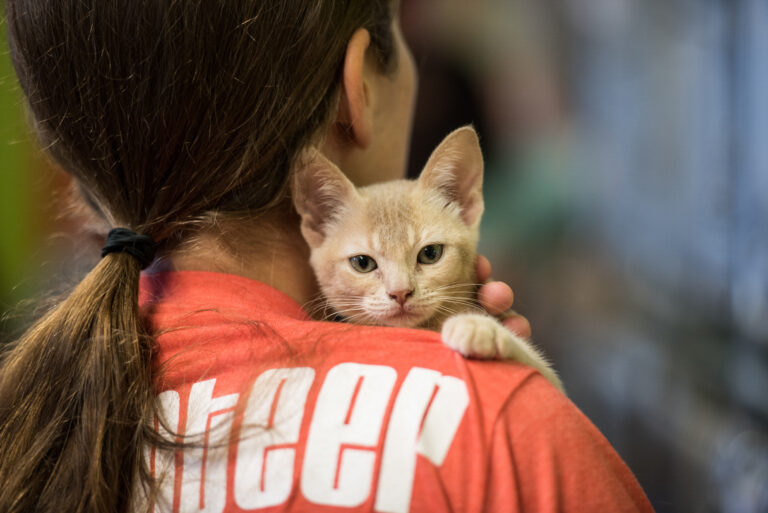As temperatures rise and spring transitions into summer, many cat owners start to reassess their feline’s diet. One common question is whether wet or dry cat food is better suited for the warmer months. Both types of food offer their own unique benefits and drawbacks, and choosing the right option often depends on your cat’s specific needs, lifestyle, and health condition.
Understanding the key differences between wet and dry cat food—and how those differences impact hydration, digestion, and overall health during warmer weather—will help you make an informed decision for your cat’s seasonal nutrition.
Table of Contents
Wet Cat Food: Benefits and Drawbacks in Warmer Months
- Higher Moisture Content = Better Hydration
Wet cat food contains approximately 70-80% moisture, making it a fantastic source of hydration. Cats, especially indoor ones, often have a low thirst drive and may not drink enough water independently. In hot weather, the risk of dehydration increases, particularly if your cat is less inclined to visit the water bowl frequently. Offering wet food ensures your cat gets extra fluids with every meal, supporting kidney health and reducing the risk of urinary tract issues.
- Easier to Digest
Wet food tends to be easier to chew and digest, making it ideal for older cats, kittens, or cats with dental issues. The softer texture is gentle on sensitive stomachs and can be beneficial during warmer months when some cats experience reduced appetite or mild digestive upsets.
- Variety and Palatability
Wet food often comes in a wide range of flavors and textures, appealing to even the pickiest eaters. If your cat’s appetite decreases in the heat, the aroma and moisture content of wet food may help stimulate interest in eating.
Drawbacks:
- Spoilage Risk: In warm temperatures, wet food left out for too long can spoil quickly, leading to bacterial growth. It’s important to serve smaller portions and remove uneaten food after 20-30 minutes.
- Cost and Storage: Wet food is typically more expensive than dry food and requires refrigeration after opening.
- Dental Health: Unlike dry kibble, wet food doesn’t provide the abrasive action that may help reduce plaque buildup.
Dry Cat Food: Benefits and Drawbacks in Warmer Months
- Convenience and Longer Shelf Life
Dry cat food is easy to store, measure, and serve. It can be left out throughout the day without immediate risk of spoilage, making it ideal if you’re away from home for extended periods. In warm months, when bacteria grow faster, dry food’s stability is an advantage.
- Dental Benefits
Dry kibble has a slightly abrasive texture that can help scrape away plaque and tartar, supporting better dental hygiene. While it’s not a substitute for brushing, it may reduce the buildup of dental problems during the season.
- Affordable and Easy to Portion
Dry food is typically more cost-effective and allows for easy portion control, helping prevent overfeeding, which can be an issue if your cat is less active in hot weather.
Drawbacks:
- Low Moisture Content: Dry food contains only 8-12% moisture, which can contribute to dehydration, especially during warmer months. Cats eating only dry food need to compensate by drinking plenty of water, which some cats may not naturally do.
- Higher Carbohydrate Content: Some dry foods contain fillers and carbs, which may not be ideal for carnivorous felines prone to weight gain.
- Less Palatable: Some cats may find dry food less appealing, particularly in hot weather when appetite decreases.
Which Option Is Better for Warmer Months?
There’s no one-size-fits-all answer. However, many veterinarians and nutritionists recommend incorporating wet food into your cat’s diet during warmer months due to its higher water content and ease of digestion. Hydration is crucial, especially as the risk of heat exhaustion and urinary tract issues increases.
That said, dry food’s stability and convenience shouldn’t be discounted. A balanced combination of both wet and dry food often works well for many cats. You can feed wet food for hydration and palatability while offering small amounts of dry food to promote dental health and maintain mealtime structure.
Tips for Feeding Cats in Warmer Weather
- Keep water bowls fresh: Offer multiple bowls around the house and change the water frequently.
- Serve smaller portions of wet food: To prevent spoilage, feed smaller amounts and discard uneaten food after 20-30 minutes.
- Store food properly: Keep dry food in a cool, dry place, and refrigerate open cans of wet food.
- Use food puzzles: Encourage activity and mental stimulation, especially if your cat becomes less active in the heat.
- Consider ice cubes: Some cats enjoy licking ice cubes made from water or low-sodium broth, adding extra hydration.
In Conclusion

Both wet and dry cat foods have their place, but when it comes to warmer months, wet food holds an advantage due to its moisture content and digestibility. Still, a mixed approach tailored to your cat’s preferences and health can offer the best of both worlds. By focusing on hydration, proper storage, and balanced nutrition, you can ensure your feline companion stays healthy and happy all season long.







